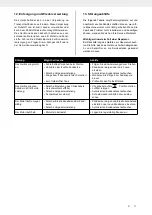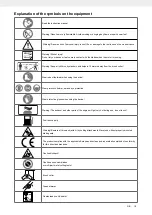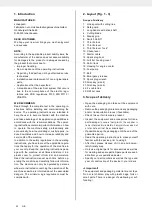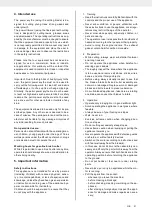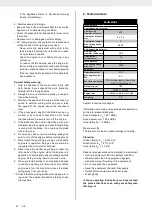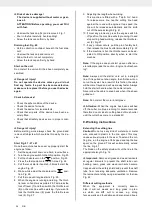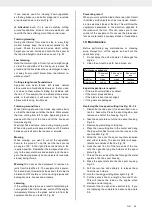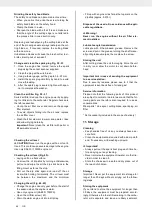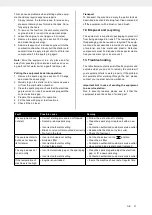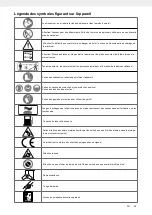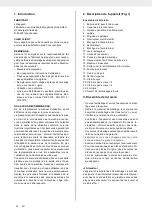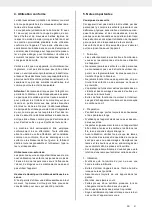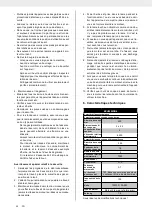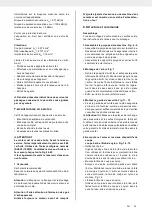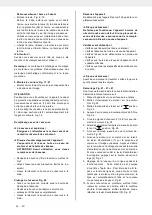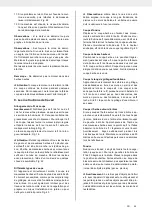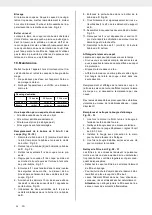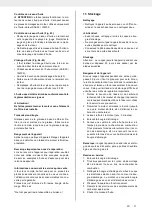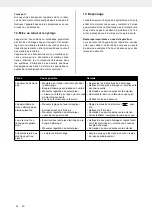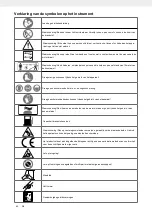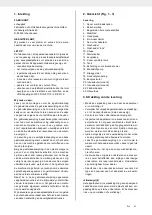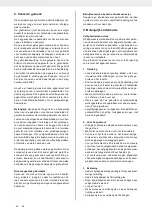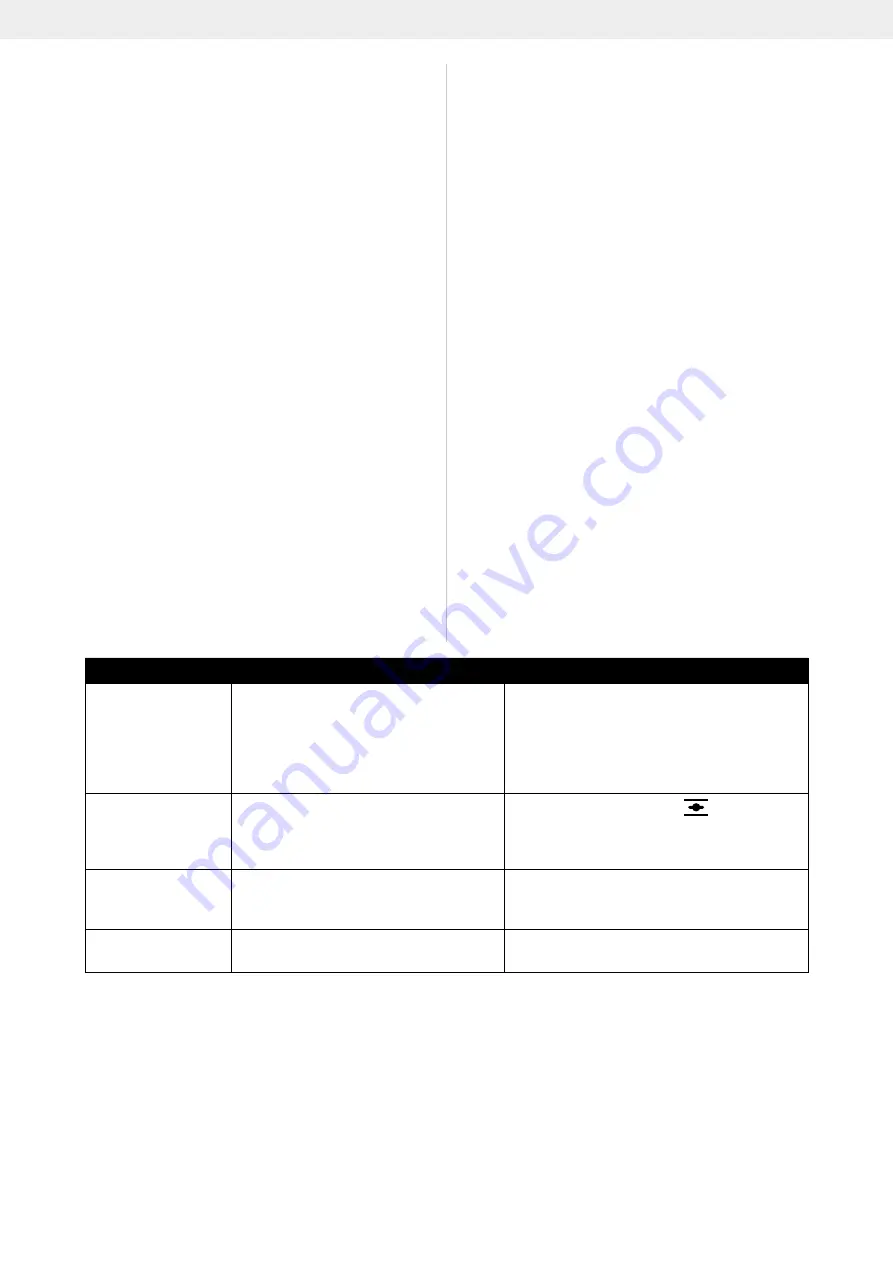
27
GB
Transport
To transport the machine, empty the petrol tank as
described in section 8 draining fuel. Clean coarse dirt
off the equipment with a brush or hand brush.
12. Disposal and recycling
The equipment is supplied in packaging to prevent it
from being damaged in transit. The raw materials in
this packaging can be reused or recycled. The equip
-
ment and its accessories are made of various types
of material, such as metal and plastic. Defective
components must be disposed of as special waste.
Ask your dealer or your local council.
13. Troubleshooting
The table below contains a list of fault symptoms and
explains what you can do to remedy the problem if
your equipment fails to work properly. If the problem
still persists after working through the list, please
contact your nearest service workshop.
Important hint in case of sending the equipment
to a service station:
Due to security reasons please see to it that the
equipment is sent back free of oil and gas!
Fault
Possible cause
Remedy
The equipment does
not start
• Correct starting procedure not followed
• Sooted or damp spark plug
• Incorrect carburetor setting
•
Blade or nylon cutter mounted incorrectly
• No fuel in the tank
• Follow the instructions for starting
• Clean the spark plug or replace it with a new
one
• Contact an authorized customer service outlet
•
Reassemble the blade or nylon cutter
• Check the fuel level
The equipment starts
but does not develop
its full power
• Incorrect choke lever setting
•
Soiled air filter
• Incorrect carburetor setting
• Cutting blade blunt
• Set the choke lever on the position
•
Clean the air filter
• Contact an authorized customer service outlet
• Have cutting blade resharpened /replaced
The engine does not
run smoothly
• Incorrect electrode gap on the spark plug
• Incorrect carburetor setting
• Clean the spark plug and adjust the electrode
gap, or fi t a new spark plug
• Contact an authorized customer service outlet
If the temperature of
machines is too high
• Engine is overloaded
• Insure the machines have rest at regular time
This can cause problems when starting up the equip-
ment and may require expensive repairs.
1
Slowly remove the fuel tank cap to release any
pressure that may have formed in the tank. Care
-
fully empty the tank.
2 To remove the fuel from the carburetor, start the
engine and let it run until the equipment stops.
3 Leave the engine to cool (approx. 5 minutes).
4 Remove the spark plug (see section 10 Change
and clean the spark plug).
5 Add one teaspoon of 4-stroke engine oil into the
combustion chamber. Slowly pull the starter cord
several times to apply a layer of oil to all internal
components. Fit the spark plug again.
Note:
Store the equipment in a dry place and far
away from possible ignition sources such as an oven,
a gas-fi red hot water boiler, a gas-fi red dryer, etc.
Putting the equipment back into operation
1 Remove the spark plug (see section 10 Change
and clean the spark plug).
2
Quickly tug on the starter cord to remove excess
oil from the combustion chamber.
3 Clean the spark plug and check that the electrode
gap is correct, or insert a new spark plug with the
correct electrode gap.
4 Prepare the equipment for operation.
5 Fill the tank with proper fuel locations.
6 Check it the oil level.





